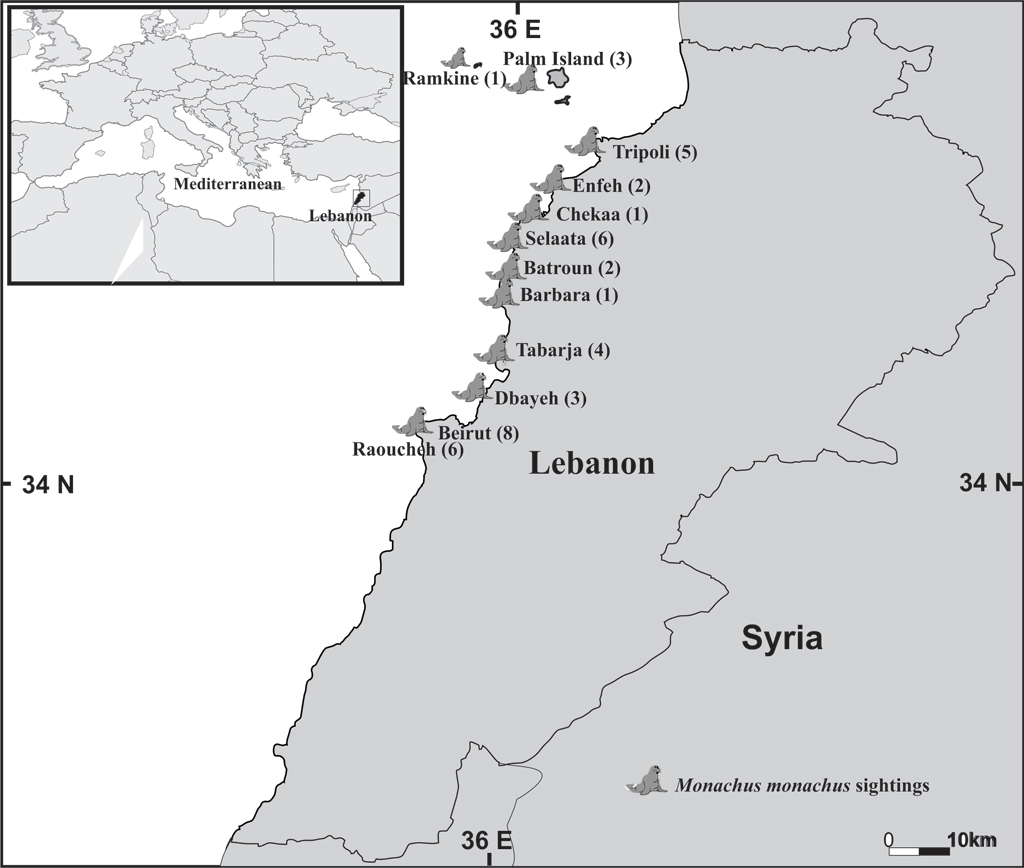Search
05/20: New sighting of the Mediterranean monk seal in Lebanon
A monk seal was observed in Dbayeh, Mount Lebanon, last April. While the sightings of this rare species are punctual, prospecting and regular monitoring are necessary to better understand the occurrence of the species and to protect it.
After being considered as “Critically Endangered” for the previous 19 years, the Mediterranean monk seal Monachus monachus (Hermann, 1779) was listed to “Endangered”, according to the IUCN Red List. Although the population is getting better in the Mediterranean, the monk seal remains a relatively rare species, and difficult to observe except along certain Greek and Turkish areas.
In Lebanon, over a period of almost 20 years (2003 – April 2020), 47 monk seal sightings were recorded. These sightings occurred from Beirut to Tripoli in the north of Lebanon (See the map below). “All the Mediterranean monk seals reported along the Lebanese coast might represent the remnants of an ancient bigger population. The second assumption is that the recorded sightings are the result of a significant expansion of the colonies established in Turkey, 250 km north or in Cyprus, 150 km west”, says Dr. Ali Badreddine. marine biology expert,

A map showing the Mediterranean monk seal sightings along the Lebanese coastline between 2003 until April 2020 (The numbers represent the sightings per location).
To confirm one or the other hypothesis, genetic analyses could be necessary, but also a regular monitoring, as described in the updated Regional strategy for the conservation of Monk Seal in the Mediterranean (Decision IG.24/7) and the National monitoring programme for marine Biodiversity in Lebanon, adopted in 2018 as part of a regional process endorsed by the Parties to the Barcelona Convention to apply the ecosystem approach.
The monk seal is one of the species listed in the Annex II of the SPA/BD Protocol of the Barcelona Convention. Protect this species as well as other species and ecosystems of conservation interest is a priority to which SPA/RAC dedicates substantial resources.
“From a conservation point of view, the approach should be scientifically based, and considerate the complex interactions within the ecosystems, including human activities. This is the core of the new IMAP-MAP project [Towards achieving the Good Environmental Status of the Mediterranean Sea and Coast through an Ecologically Representative and Efficiently Managed and Monitored Network of Marine Protected Areas] we are running within the UNEP MAP”, says Dr. Atef Limam, IMAP-MPA project-officer at SPA/RAC, in charge of the MPA component.
In Lebanon, there are three established Marine Protected Areas: Abbassieh Coast, Tyre Coast and Palm Islands. In the last MPA, monk seal sightings were reported three times since 2003. Efficient monitoring and management measures would certainly contribute to protect rare species such as the monk seal, and more generally to establish the balance between conservation and the sustainable use of the marine biodiversity.
To know more about the occurrence of the Mediterranean monk seal in Lebanon, please read the short note prepared by Dr. Ali Badreddine.
Photo: MOm/P. Dendrinos - Photo taken in Greece.




Find Us On...